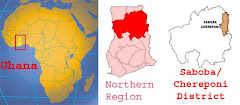Imagine your son or your brother or yourself when you were just graduating grade 12. Now imagine that same person teaching your son or daughter elementary school. Don’t skim over those words. Imagine a grade 11 or grade 12 student, being responsible, for the education of your son or daughter when they are in elementary school.
Crazy? I know. Why am I asking you to imagine this scenario? Because that is the situation for 25% of the children in primary school, here in Saboba.
“They are poisoning the education system!” Isaac exclaims as he unveils the reality of the public education system in a rural district in
3 Problems:
Problem 1: Not enough teachers. A school that gets built and is not filled with a teacher and students is called a white elephant, and it’s the last thing you want in development. But right now there are simply not enough teachers in the pipeline to fill the growing demand for education. The national pupil teacher ratio is 35:1 for primary schools. Right now in one of the biggest primary schools in Saboba town, enrolment is approaching 900 hundred, and there are 11 teachers. That’s 81 kids per teacher.
The reason for this is two-fold. First off there are simply not enough people graduating teacher training colleges every year, to fill the growing need for education. Second, there is a constant outflow from the district, because teachers are using it only as a stepping ground to greener pastures. After 3 years service in a rural district, you are eligible to go back to school and upgrade. For those of you who have just finished your PDP program, think of whether or not at this point you would want to go live in a rural village without electricity or running water, potentially 45min away from the nearest town. The incentives just aren’t there to keep teachers at their posts for longer than the minimum service.
Problem 2: to solve problem one, supplementary untrained teachers have been sent into schools.
It is exactly these people that have been thrown into the education system to relieve the pressure (not to be deceived, the numbers quoted in problem 1 are with this “relieved pressure”). Some of the people who are accepted for youth employment have not even graduated middle school (equivalent of grade 8). They receive no initial training, and are put to teach young children the primary grades. That’s right ladies and gentlemen, in June you could drop out of grade 10, and in September be teaching primary school level 2.
Problem 3: Most of you have guessed it now, but the third problem is quality. The quality is unbelievably low. Isaac has just returned from a meeting where the education management was discussing with head teachers the low grades seen this past year in the middle schools, and to address it.
“Only 35% of students passed their finals” he sadly explains as my jaw hits the ground. “The reason is because they come in from primary school completely unprepared.”
He goes onto explain that the problem is so complex. First off those youth employment are paid closed to nothing, and often they don’t get paid for periods of up to 3 months. Think to yourself how motivated you would be to teach in the school when you haven’t collected your measly salary in 3 months. So alas, these teachers sometimes don’t show up for class, and often cut the days short. Also, those teachers that do complete formal training, only start off at 150$ a month, hardly something to write home about.
Why aren’t they monitored? The management is responsible for that, and they don’t receive any funds for monitoring teachers. The district is cut up into zones, and one person might have to monitor 15 to 25 schools, but there is no budget for fuel to get to the classrooms.
Now upon driving out in the district and to the rural communities you can see teachers riding their bikes to school around 10 or 11, and starting to ride home around 1 or 2. Why would a teacher for a rural school be cutting the day so short? Though accommodation is provided for a teacher when they are posted to a rural village, they often don’t want to stay where there is no electricity and no amenities. So they will commute to and from the main town, which in many cases can be up to 20km away.
If that’s not bad enough, this is just the surface. Everytime I think I am starting to figure it out, more issues become uncovered. To find out just how deep the rabbit hole goes, email me. Education has recently become a deep passion of mine, and I’d love to share with you some of the challenges faced here in


